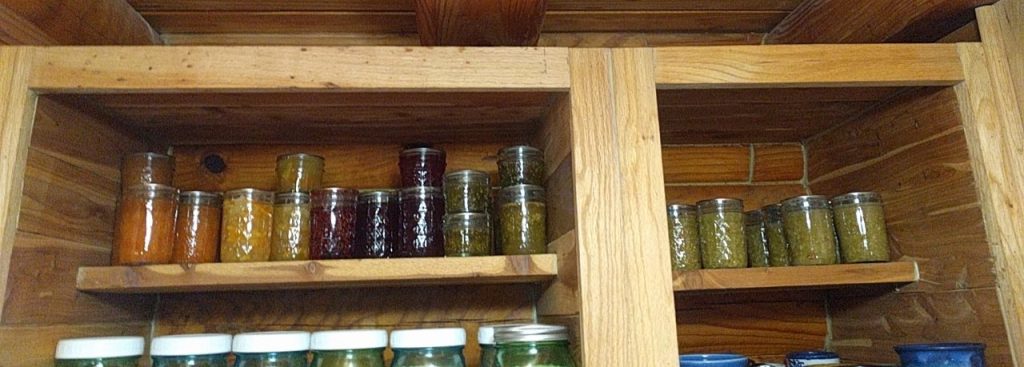I am certain that my Great Grandmother who grew up in eastern rural North Carolina in a large family was raised with a huge garden, yard chickens, and the knowledge to can and otherwise preserve what could not be eaten right away to have for the non productive winter months. They probably could grow collards or kale well into the winter, likely made kraut and pickles in large crocks to be dipped into all winter, cold stored apples and pumpkins.
My Grandmother was born in the same environment, but moved to the city as a young woman and I am unaware whether she canned, but I know she didn’t after I was born, she was working outside the home at a bank by then. My mother made a few attempts when I was a young teen, but I remember jars of foods she had prepared, bursting on the shelves in the room off the garage.
Though I had a garden of some size through most of my adult life in nearly every home and making Pomegranate jelly with my Dad most autumns, I really didn’t get into canning until we retired and bought our farm. I keep a decent sized garden, have a small orchard, and many wild berries. This area has a strong ethic of buy local and eat local and the environmental impact of doing so spoke loudly to me. I knew that I wanted to raise chickens for eggs and grow much of our food. That which I can’t or don’t grow, I try to purchase from the Farmers’ Market, both meat and produce. Though I don’t buy produce to can, I do try to save as much of what we grow as I possible by freezing, fermenting, or canning.
The Asian Pear trees produce much more than fruit than we can consume. Last year, we gathered the apples and pears and took them to Wilderness Road Regional Museum and pressed them into a delicious fruit cider. Some of the pears were made into marmalade and jam. This year I was away from about the time the fruit was ripening until the middle of last week. The deer got a lot of it, but enough remained to make 7 pints of applesauce, 3 pints of pear sauce, more than 5 half pints of Pear Marmalade. And a enough of the undamaged ones to enjoy fresh and to barter for some hot peppers in two varieties that I don’t grow.
After a decade of trying to water bath can in an 8 quart stock pot, constantly looking for a shallow “rack” to put under the jars, I purchased a real water bath canner, a 21.5 quart one with a real rack.
Though the tomatoes didn’t do well this year, there are jars of tomato sauce, pizza sauce, and salsa. The cucumbers thrived and many jars of pickles were canned, other varieties fermented and stored in the refrigerator. The hot peppers are still producing and 5 quarts are pickled in the refrigerator, the rest to be shelf stable canned, or being turned into fermented hot sauces in the style of Sriracha or dried.
There are just the two of us with occasional visits from grown children, some of the pickles and sauces will be shared, but we should eat well. The garden is still producing green beans to be enjoyed and frozen, hot peppers to be canned, and pumpkins that won’t be revealed until the leaves die back or we get a frost.
Each year I look at the shelves and wonder if we will eat it all, each spring I anxiously await fresh foods from the Farmers’ Market and early garden as the shelves empty of preserved garden goodness and fill with empty jars awaiting a new season of canning. The canner won’t be put away until the last pepper is picked and the excess pumpkin canned for holiday pies, then the canning tools and food mill will be packed in the big pot and stored away for another year. Waste not, want not.





